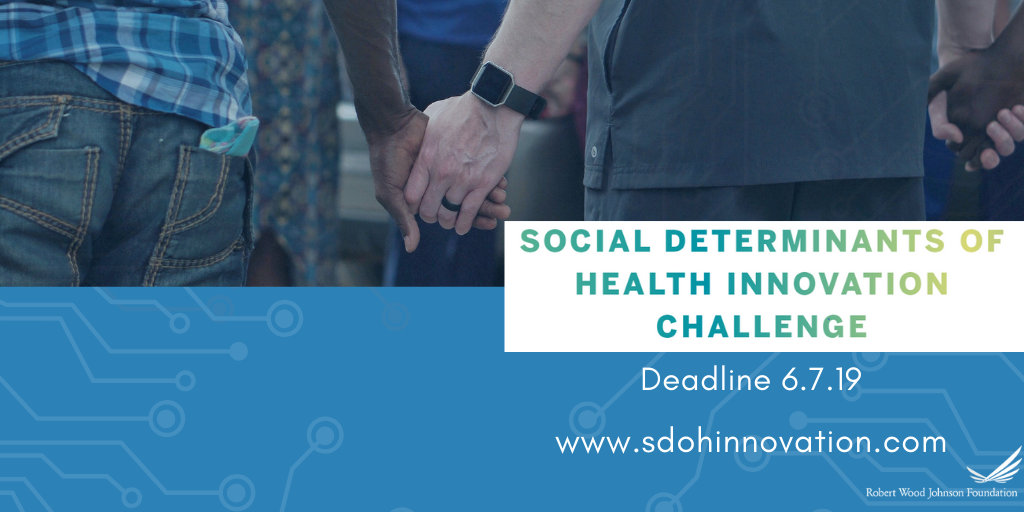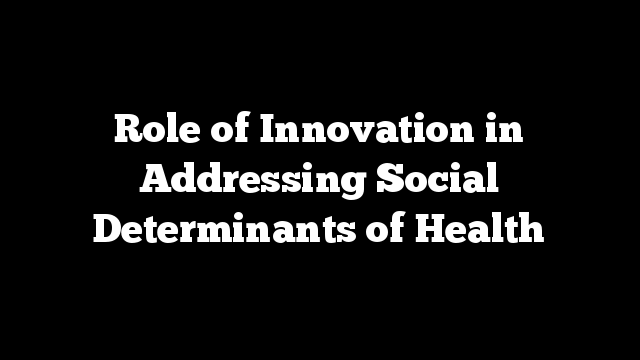SPONSORED POST

By CATALYST @ HEALTH 2.0
Nearly a decade has passed since Healthy People 2020 positioned social determinants of health (SDoH) at the forefront of healthcare reform. As defined by the report, SDoH are the “conditions in the environment in which people are born, live, learn, work, play, worship, and age, that affect a wide range of health, functioning, and quality of life outcomes.” Examples of social determinants include:
- Resources to meet daily needs (e.g., safe housing and local food markets)
- Educational, economic, and job opportunities
- Community-based resources in support of community living and opportunities for recreational and leisure-time activities
- Transportation
The ability to influence
social determinants largely falls outside of the health care system’s reach.
Therefore, a key to address opportunities for health involves collaboration between
health care and different industries such as education, housing, and
transportation. Both the public and private sectors have made significant
efforts to bridge the gap between physical, mental, and social care by
experimenting with non-traditional partnerships.
The Center for Disease Control and Prevention (CDC) has spearheaded multiple programs with government agencies and community partners to achieve the goals outlined in Healthy People 2020. One of the most notable successes is the Childhood Lead Poisoning Prevention Program, an initiative by the CDC with the Department of Housing & Urban Development and the U.S. Environmental Protection Agency. Through housing rehabilitation, enforcement of housing and health codes, and partnerships with healthcare experts, the program helped Healthy People 2020 exceed their target of reducing blood lead level in children.
Other programs such as the “National Program to Eliminate Diabetes Related Disparities in Vulnerable Populations,” leveraged community partners and resources to increase food security, health literacy, and physical spaces for active living. In one of their projects, the program partnered with community health workers (promotoras) who spoke Spanish to engage with Hispanic/Latino communities where participation to Diabetes Self-Management Education (DSME) was low. The community health workers provided linguistically and culturally-sensitive materials that effectively increased participation in DSME among the targeted population. The outcomes from such initiatives have inspired more health and community organizations to work together to reduce health disparities.
Private health insurers have also joined the movement to influence SDoH as the shift towards value-based care incentivizes them to keep their beneficiaries healthy beyond clinical settings. Kaiser Permanente, which prides itself on helping their beneficiaries achieve total health, will launch their social care network Thrive Local to connect healthcare and social services providers. Thrive Local will be powered by Unite Us, a startup that helps providers refer social services, track outcomes, and collaborate care with community partners. Meanwhile, Blue Cross Blue Shield has invested nearly $40M into Solera Health to integrate social determinants data and resources into healthcare. Solera Health will use the funding to build out a network of digital health and social services providers and reimagine how health plans will pay social service providers. Both insurers are hopeful that the partnerships will promote better health outcomes and create a new care delivery model that effectively address social needs.
Developers and innovators are encouraged to create technology that can support the integration of SDoH collaborations into healthcare. Those who are interested in this space and have a digital solution should apply to the “Robert Wood Johnson Foundation Social Determinants of Health Innovation Challenge,” which seeks novel technology that helps providers and/or patients connect to health services related to SDoH.

Examples
include but are not limited to:
- Digital tools that pull data from
non-profit services to assist health systems in serving diverse patient
populations on an ongoing basis - Apps for consumers that provide health
information based on their community/location - Technology that harnesses governmental
or open source data to create insights for healthcare providers to evaluate
SDoH data and improve population health
In this multi-phase
challenge, innovators are asked to submit tech-enabled solutions that account
for SDoH. Subject matter experts will evaluate the entries and select the top
five teams who will move onto Phase II. The five semi-finalists will be awarded
$5,000 each to further develop their application or tool. Then, three finalists
will be chosen at the end of Phase II to compete at a live pitch event! They
will demo their technology in front of a captivated audience of investors,
provider organizations, and members of the media at a prominent health
conference. Judges will select the first, second, and third place winners live.
Winners will be awarded $40,000 for first place, $25,000 for second place, and
$10,000 for third place.
The challenge is open to innovators and companies at any stage of development. If you are interested in applying, the competition is now accepting Phase I applications and the deadline to submit is June 7th, 2019 11:59 PM EDT.
To learn more about the challenge, please visit the website. To sign up for updates on the challenge, please click here.
Catalyst @ Health 2.0 (“Catalyst”) is the industry leader in digital health strategic partnering, hosting competitive innovation “challenge” events, as well as developing and implementing programs for piloting and commercializing novel healthcare technologies.
